Q&A with Olympus President Haruo Ogawa: Quality, innovation key to staying ahead of mirrorless camera competition
posted Thursday, September 27, 2012 at 1:02 PM EDT

Mr. Haruo Ogawa
President
Olympus Imaging Division
Olympus has been in the news recently for a lot of different reasons -- some good (the popularity and positive reviews of its new cameras, in particular the OM-D E-M5), some bad (financial scandal) and some very interesting (Sony's rumored new partnership). Last week at Photokina 2012, we were very fortunate to interview Mr. Haruo Ogawa, President of Olympus Imaging, to get his perspective on the future of Olympus and what it means for devotees of their cameras and lenses.
Dave Etchells/Imaging Resource: Mr. Ogawa-san, can you fill in our readers on your history with Olympus? When did you become president of the Imaging division?
Haruo Ogawa/Olympus Imaging Corp.: This April, I became the president of Olympus Imaging. When I joined Olympus I worked for Olympus corporate research and development as an engineer. Afterward, I moved to the Olympus Imaging division as the marketing general manager.
DE: One area we're all concerned about is the financial problems that Olympus had last year. What impact did that issue have on the Imaging division and its management?
Ogawa: I really apologize to our customers and users, and those who are worried about the effects of our company scandal that came to light last year. After changing our management, our new slogan is "Back to Basics." With this slogan, we are trying to change everything -- not only product-wise but also service-wise. We are trying to become the new Olympus, one based on technology.
DE: One analyst told the Asahi Shimbun newspaper last December: "The digital camera business depends much on brand image. If the image is tarnished, there is a possibility that no one will buy them." Personally, I think most of the photo community saw all of this as a side issue. I don't think people in the professional or photo business community saw the scandal as having much impact on the value or the reputation of the products themselves. What is your sense of how people in the photo community have responded?
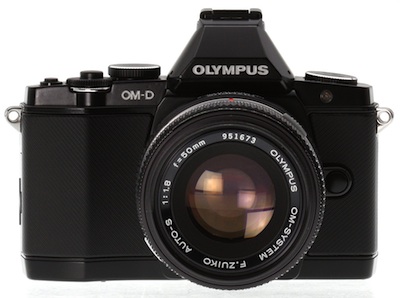
Ogawa: Because we've launched some really nice products, the Pens and the OM-D E-M5, our customers continued to support us, and that's been really encouraging. Originally we expected some damage to sales at the end of last year because of the scandal. But the flood in Thailand also affected the total digital market share at that time.
[Ed. Note: Olympus was one of the companies affected by the floods, but perhaps with its competitors facing supply issues, its sales weren't affected by the scandal as much as they could have been.]
This year we launched the new E-M5 camera, and not only the customers but also our dealers have accepted the product and given us encouragement.
DE: Of course, there have been a lot of rumors about potential business partners for Olympus. The latest rumors have concentrated on Sony. Are you able to make any comment at this point about potential business partners?
Ogawa: In the market, there are a lot of rumors. It's a fact that we are searching for a business partner to improve our business. That's a fact. At this moment, we have several candidates, but we still have not decided which one.
DE: You just mentioned the E-M5. We were very impressed with that product. It tested well, and has been well received by our readers. Can you compare the sales of the Pen and E-series cameras with the E-M5? Are you seeing a lot of sales for that model?
Ogawa: As you know, we launched the Pen worldwide three years ago. After launching the Pen, we developed the market, especially in Japan and Asia. Now the compact system camera market is growing up. CSCs are not only for traditional photography fans, but we're also developing the market for the younger generation.
The E-M5 is really well accepted, not only in the Asian market or Japanese market, but also worldwide. It appeals to the traditional SLR users for its compact size and light weight that make it easy to carry to everywhere. Of course, its superb performance is another attraction. High image quality, the five-axis IS system, and also the weatherproof construction. These are very popular with traditional photography fans. Even in the U.S. market, the availability of the E-M5 is very limited.
DE: So you have the good problem of not being able to make them fast enough. Shortly after the introduction of the E-M5, we noticed an uptick in demand and prices of many Micro Four Thirds lenses. Our Senior Editor, Shawn Barnett, owns Olympus cameras himself, and noticed that all of sudden, lenses seemed to get more expensive. Have you seen the same trend towards increased demand for lenses since the E-M5?
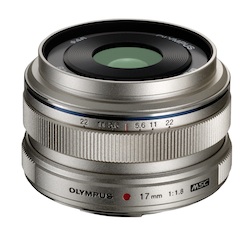
Ogawa: Yes, it is a trend. That trend is not only in the U.S., but also all over the world. When we introduced the Pen, many people sought to use their own legacy lenses or other brands of lens, but the E-M5 user is more frequently buying Micro Four Thirds lenses to use with their new camera. The E-M5 has a much, much higher attach rate.
Part of this is due to the overall lens lineup, not only the Olympus Micro Four Thirds lineup. The total Micro Four Thirds lens lineup is really attractive for the SLR traditional type of users.
DE: So you're really seeing a benefit from the partnership and the fact that multiple companies make products for the platform.
Ogawa: That's right. As you know, many companies have entered the mirrorless business, but if we look at the lens lineups, the Micro Four Thirds companies offer a greater variety of lenses. That's one of the reasons even traditional SLR users look for our products.
DE: That actually leads to another question: Olympus and Panasonic were pioneers in what now is the fastest-growing segment in the market, mirrorless compact system cameras. And you're particularly strong in lens quality and variety. But now these other manufacturers, including Canon, Fujifilm, Nikon, Samsung, and Sony, are entering the mirrorless market. How do you plan to take advantage of your position to stay competitive?
Ogawa: Manufacturing a mirrorless camera is much, much easier than making an SLR, because the structure is just the combination of the electrical parts. The most important part is the algorithms we use for image processing, tuned to maintain good image quality. And we must also consider how to eliminate unnecessary parts to keep the size smaller.
If we concentrate on the image processing part, we can distinguish our cameras from the others with high image quality, faster autofocus speed, and also the burst rate speed. We have already made advances in these areas, and we've moved ahead of the other mirrorless manufacturers with our two latest generations of cameras. I think you can imagine the other manufacturers will try to catch up to the same levels we have achieved, but we already have the next five years planned to improve those aspects of our technology.
There are other things in addition to the image quality and basic camera performance where we stand out. Features like the Art Filters and Live Guide modes show our efforts to create an easy user interface. And we've added touchscreen shutter, touch autofocus and connectivity to social networks.
Other SLR manufacturers have to take care of both DSLR and mirrorless. Our strength is we can just concentrate on the mirrorless business for the moment.
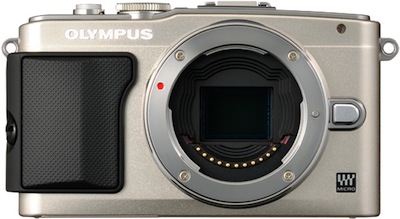
DE: That touches on another question from a reader about SLR versus mirrorless. It sounds like nearly all of your focus is on the mirrorless cameras. Does that mean you've stopped developing the existing Four Thirds or E-series camera system and you're putting everything into mirrorless?
Ogawa: Of course, we're reaching a high level of performance with our Micro Four Thirds mirrorless product, but we are still not satisfied with these at the professional level. That's why we think we still need the E-System to satisfy professional photographers.
One reason for this is the lens lineup. The E-System has a super high-grade lens lineup that we're still maintaining. These lenses have a really, really good reputation from even top professional photographers.
When we introduced the E-5, it was really well accepted by photographers, along with its high-grade lenses. After launching the E-M5, we've shown the benefit of compact size, even for the professional photographer and other Four Thirds users.
As we consider a successor for the E-5, we are not only chasing high image quality and high performance. We would also like to provide the benefits of a small body size. You may remember these policies were also a key part of the Four Thirds concept itself. We are considering several different ideas for a body that would accept Four Thirds lenses, but would also have on an acceptably compact size.
At this moment, we cannot say anything for sure, because there are many possibilities -- it could be Micro Four Thirds, or Four Thirds, or somehow a hybrid. We are currently studying several options, but we've not yet decided what form the camera should have.
DE: Well, it sounds like the good news for our readers in the professional area is that Olympus is thinking about addressing professional needs on an ongoing basis. You haven't abandoned the professional market. It's just that right now your focus has been on the consumer, and you're still considering how best to address the professional.
Ogawa: Yes, we are certainly considering this.
DE: Now for some technical questions. You mentioned previously in passing that the image stabilization in the E-M5 corrects both translation and rotation. That's pretty unique. I'm only aware of one other manufacturer that does that allows rotational correction. Could you talk a little bit about the challenges in developing the E-M5's stabilization system?
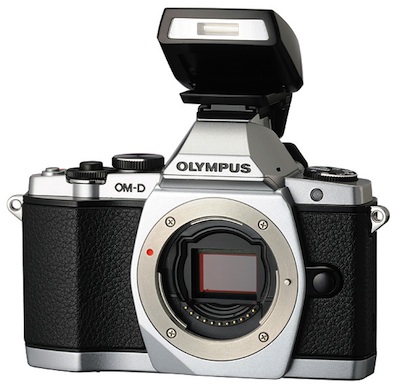
Ogawa: One of the most important aspects for the five-axis image stabilization system was the positioning of the motion sensor. The gyro sensor was put into what looks like the pentaprism housing of the E-M5. There's no prism there, but it's not just a design feature. This part includes not only the EVF, but also the motion sensor, because the best position for this was just above the optical center.
The other important aspect is the actuator to move the image sensor. We are using a voice coil motor, which is very precise and has low power consumption.
As you know, we at Olympus have always said that in-body stabilization is the best method. Five-axis stabilization demonstrates this, because rotation cannot be compensated by a lens-based image stabilization system. That has been a concern for a long time.
DE: Some of our readers feel that one of the areas where the E-M5 has room for improvement is in continuous autofocus. We've seen many other manufacturers integrating phase detection on the sensor, namely Nikon, Fujifilm, Canon and Sony. Is that a priority for Olympus? Is that something you are looking at also?
Ogawa: We're proud of our technology in contrast detection autofocus, which we call the FAST AF system. And we are always trying to improve the continuous autofocus speed, of course. Phase detection on the image sensor is one solution, but in our roadmap for the next five years, we have already implemented several ideas on how to improve continuous autofocus. We cannot tell you the methods we plan to use, but we do intend to achieve an SLR-like level of continuous autofocus speed in the future.
DE: Of course, my readers now will say, "Well, why didn't you ask what the Olympus five-year plan was?" [laughs] Another reader question… this reader commented that the E-PM2 and the E-PL5 seem very, very close in both specifications and price. And he's wondering, is there really a future for both of those lines or will those products be merged in the future?
Ogawa: The lineup is not settled on by specification or design. We envision the target user, and then we decide upon the features for the product itself. At the moment, we have three targets for Pen cameras: Pen Mini users, Pen Lite users and original Pen users. In addition, we have E-M5 users and we also have to consider another potential target for the E-M5.
If in the future our R&D or manufacturing resources somehow become limited, then we may decide to merge something. But at the moment, we plan to keep the current lineup because we clearly see the target users of Mini, Lite, Pen and E-M5.
DE: It's just not about the specs and price. It's about the user experience and the user interface.
Ogawa: That's right, and of course the design.
DE: Coming back to the E-M5, as I said, it did very well in our tests. Notably it used a Sony sensor as opposed to Panasonic. Does that mark a change of direction for Olympus and sensor technology?
Ogawa: It's obviously to our benefit to select the best image sensor, regardless of the manufacturer. We never fix on one manufacturer. Which device we choose depends on the target users' needs. We tell the sensor manufacturers that we'd like to have this type of product or we have this type of need. Then we ask the device manufacturer to meet our requirements.
DE: You're saying it's not a matter of a simple switch, where you were once using Panasonic, and now you're using Sony. It's a decision you'll make on a case-by-case basis for each camera that comes along, such as the E-M5, for which Sony was the best match. Possibly, for other cameras in the future, Panasonic or some other manufacturer might have the right sensor.
Ogawa: That's right, it's case-by-case. And also, we are always communicating with the sensor manufacturers about which features are necessary for the next generation of our product. That's the most important part of the relationship with them.
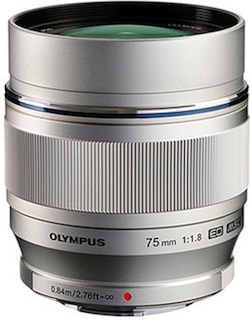
DE: The Micro Four Thirds lineup has some really fantastic prime lenses. We were very, very impressed with the 75mm f/1.8. But currently there are no high quality, fast zoom lenses, something like an f/2.8 constant aperture. Is there a chance we will see that sort of lens coming or will your focus remain on primes?
Ogawa: Right now we're concentrating on the fast prime lenses because you can achieve a very good combination of small size and high quality with a bright single focal length lens. Of course, we should also consider improving the zoom lens lineup with a fast lens. Not only this, but also we have to consider how to utilize our Four Thirds lenses in a more comfortable way.
DE: OK, last question -- an easy one. What recent Olympus announcement are you personally the most excited about?
Ogawa: I like to concentrate on creating uniqueness in the market. We are always creating new markets, not only the Pen but also products like the Tough series. To create uniqueness is one of the most important roles in the photo industry. Our fans expect this of us.
DE: So it's not so much a specific product, as the idea of making unique products. Mr. Ogawa-san, thank you very much for making time in the middle of a busy show for us.
Ogawa: Thank you.
